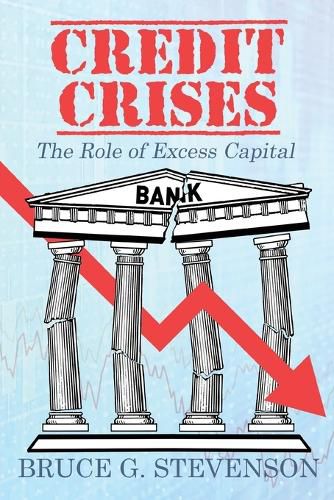Readings Newsletter
Become a Readings Member to make your shopping experience even easier.
Sign in or sign up for free!
You’re not far away from qualifying for FREE standard shipping within Australia
You’ve qualified for FREE standard shipping within Australia
The cart is loading…






This title is printed to order. This book may have been self-published. If so, we cannot guarantee the quality of the content. In the main most books will have gone through the editing process however some may not. We therefore suggest that you be aware of this before ordering this book. If in doubt check either the author or publisher’s details as we are unable to accept any returns unless they are faulty. Please contact us if you have any questions.
Credit crises are catastrophic events in which banks and lenders suffer extreme losses when loans and other credit instruments default on a large scale and cause banks to fail in extraordinary numbers. Massive loss of economic value ensues, threatening the viability of national economies and the global financial system.
The most recent credit crises, the 2007 Subprime Mortgage Crisis and 2007-2009 Great Recession, have striking parallels to the Roaring Twenties and the Great Depression. In both periods, rapid increases in the value of residential real estate fueled speculation in the housing and equity markets, and when the real estate bubbles burst, massive recessions and unemployment followed. In the eighty years between these catastrophes, several other credit crises occurred including a real estate investment trust crisis in the mid-1970s and a commercial real estate crisis in the late 1980s and early 1990s.
Credit Crises: The Role of Excess Capital provides the first definitive explanation for these repetitive catastrophes: the Excess Capital Hypothesis (ECH). Written for bankers, bank regulators, finance professionals, and policymakers, Credit Crises provides a detailed explanation of how excess capital has been the driver of past credit crises. The ECH is the definitive roadmap for mitigating credit crises, and Credit Crises offers recommendations to bankers, bank regulators, and policymakers on how to prevent and lessen future crises.
$9.00 standard shipping within Australia
FREE standard shipping within Australia for orders over $100.00
Express & International shipping calculated at checkout
This title is printed to order. This book may have been self-published. If so, we cannot guarantee the quality of the content. In the main most books will have gone through the editing process however some may not. We therefore suggest that you be aware of this before ordering this book. If in doubt check either the author or publisher’s details as we are unable to accept any returns unless they are faulty. Please contact us if you have any questions.
Credit crises are catastrophic events in which banks and lenders suffer extreme losses when loans and other credit instruments default on a large scale and cause banks to fail in extraordinary numbers. Massive loss of economic value ensues, threatening the viability of national economies and the global financial system.
The most recent credit crises, the 2007 Subprime Mortgage Crisis and 2007-2009 Great Recession, have striking parallels to the Roaring Twenties and the Great Depression. In both periods, rapid increases in the value of residential real estate fueled speculation in the housing and equity markets, and when the real estate bubbles burst, massive recessions and unemployment followed. In the eighty years between these catastrophes, several other credit crises occurred including a real estate investment trust crisis in the mid-1970s and a commercial real estate crisis in the late 1980s and early 1990s.
Credit Crises: The Role of Excess Capital provides the first definitive explanation for these repetitive catastrophes: the Excess Capital Hypothesis (ECH). Written for bankers, bank regulators, finance professionals, and policymakers, Credit Crises provides a detailed explanation of how excess capital has been the driver of past credit crises. The ECH is the definitive roadmap for mitigating credit crises, and Credit Crises offers recommendations to bankers, bank regulators, and policymakers on how to prevent and lessen future crises.